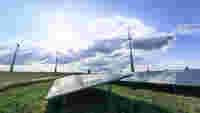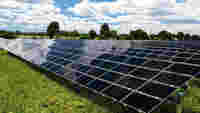Power-to-heat and power-to-gas systems offer additional options for flexibility. They convert green energy into heat, using electric boilers, or into hydrogen and then methane through electrolysis. The heat can be supplied to a local district heating network; the gas can be stored for longer periods in the existing natural gas network that supplies residential areas, power plants and fuel stations. Thus, power-to-heat and power-to-gas both reduce the load on the electrical grid and also incorporate the heating and mobility sectors, which have previously played a subordinate role in the energy transition. “We could use northern Germany as a gigantic test lab for sector linkages. A few possibilities include: gas or heat generation using excess wind energy, local subsidy programs for heat pumps or e-vehicles and test routes for electric trucks or buses using overhead lines. This would also enable the quick expansion of the wind energy sector,” says Volker Quaschning, Professor in renewable energy technologies at the University of Applied Sciences Berlin.
However, the development of options for flexibility, such as batteries, is not the only challenge. Batteries must also be networked with the decentralized generators and consumers. The energy originates in a system built from thousands of producers, dominated by solar arrays and wind turbines, and flows in many combinations in several directions; it is comparable to data on the Internet. Therefore, intelligent, digital systems are necessary to measure the complex energy flows and to control and monitor the production systems according to the network situation. In addition, the systems must enable absolutely secure communication between the production level and the control technology; hacker attacks on power plants and the electrical grid are common and can endanger the supply network. “The digitization of the energy transition is the prerequisite for managing a decentralized energy market,” says Kurth.

